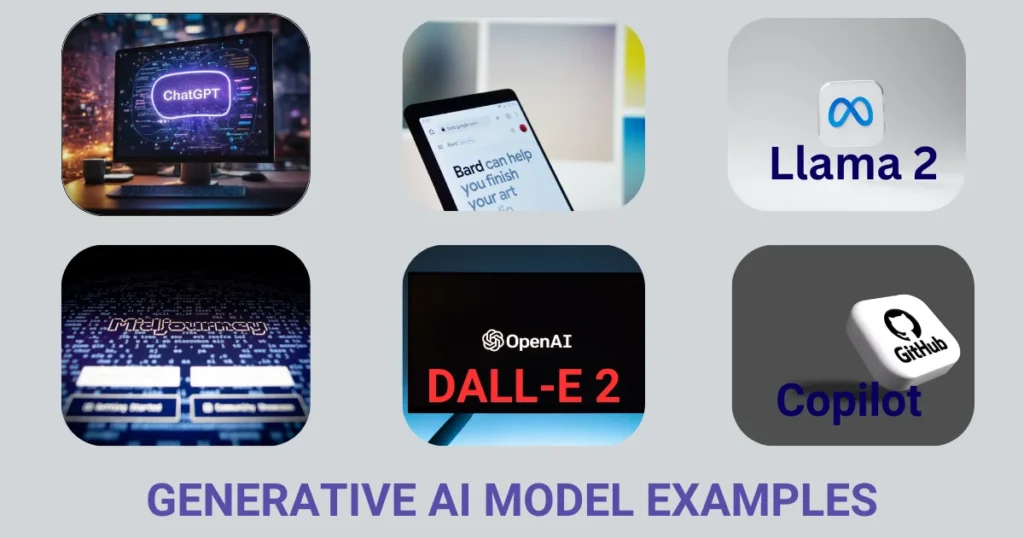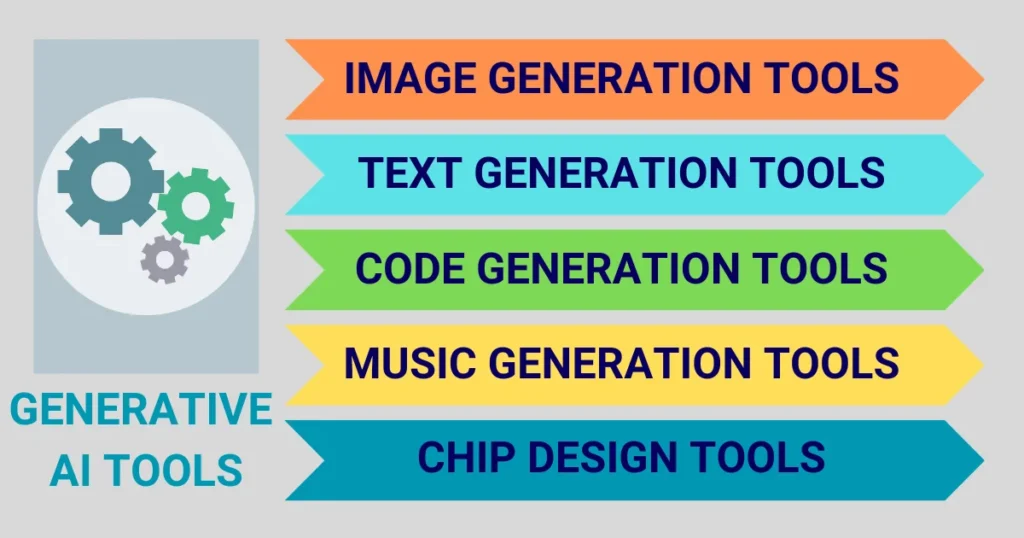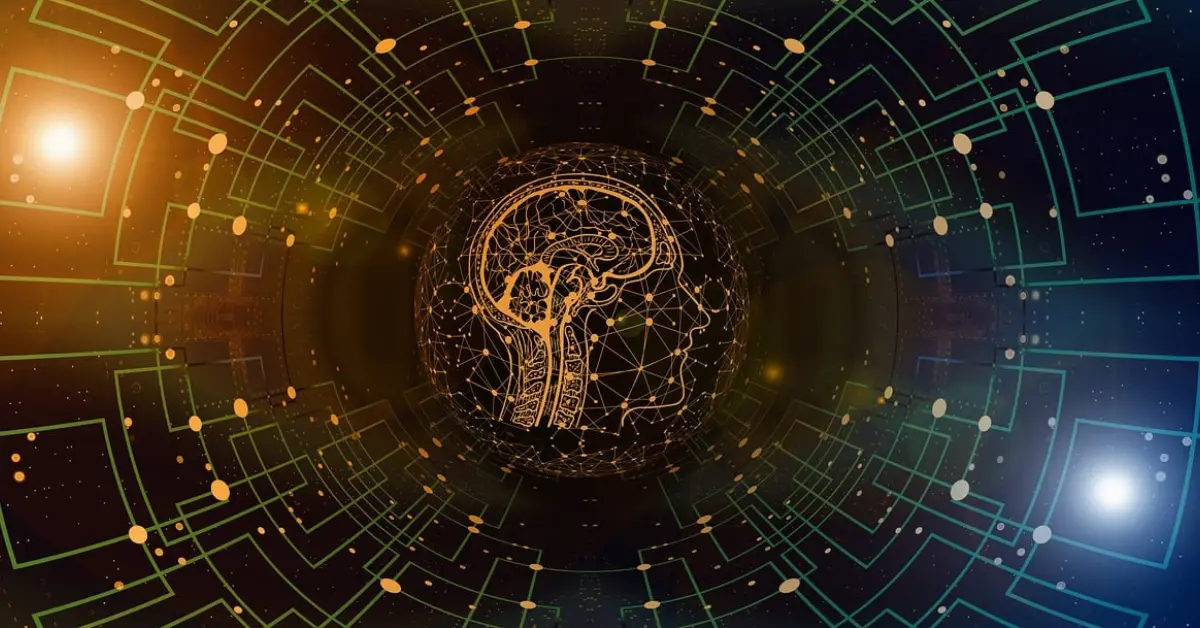Generative AI (GenAI) is a type of Artificial Intelligence that can generate different types of high-quality new content like text, audio, video, images, 3D models, etc., based on the data it gets trained on.
In simple terms, GenAI creates content in response to a natural language request provided in the form of text prompts.
This article will cover all the essential details that you need to know regarding this technology.
Table of Contents
What is Generative AI?
It is a type of Artificial Intelligence that can generate different types of high-quality new content like text, audio, video, images, 3D models, etc., based on the data it gets trained on.
The concept behind this AI is the ability of the model to learn structures and patterns from the existing data and use the gained knowledge to generate new content.
These models are trained on massive datasets using deep learning techniques, and these models interact with the user based on the text prompts given by the users. Based on the given prompts, the model carries out the conversation with humans, generates content, answers the asked questions, produces source code, etc.
In simple terms, Generative AI creates content in response to a natural language request provided in the form of text prompts.
How does Generative AI work?
Generative Artificial Intelligence uses deep learning techniques (neural networks) to learn patterns and structures from existing data and then apply the gained knowledge to generate new and original content. This existing data can be anything like images, text, audio, music, etc., and the generated content can include essays, audio, text, or any other form that humans can understand.
When the user gives a prompt in the form of text, image, video, etc., to the model, the various AI algorithms create new content in response to the given prompt.
GenAI Examples

Following are some of the examples of these models:
- ChatGPT: This model was developed by OpenAI that carries conversations with humans based on text prompts. ChatGPT can perform several tasks like answering questions, text generation, etc., similar to how humans can do.
- Google Bard: This model was developed by Google and is similar to ChatGPT, but it has access to the live Google data. It is trained on the PaLM large language model and can generate text, translate languages, answer questions, etc., based on the prompts provided by the users.
- DALL-E 2: It is a generative AI model developed by OpenAI. This model can generate images from the text descriptions based on the text prompts provided by the users.
- Midjourney: It is similar to DALL-E 2 and designed by Midjourney Inc. – a San Francisco-based research lab. It generates images and artwork based on the text prompts.
- StyleGAN: This model is trained on a large dataset and generates highly realistic images of human faces and objects.
- Llama 2: It is a model developed by Meta and is open source. It is similar to GPT-4 and creates conversational chatbots and virtual assistants.
- GANPaint: GANPaint is a tool used to paint realistic images.
- GitHub Copilot: It is an AI-powered coding tool that helps in code completion with JetBrains and Visual Studio development environments.
What are GenAI Models?
There are several types of GenAI models available. Each has its architecture and approach to generating new data. These models are designed and developed for specific tasks.
Following are some of these models:
1. Generative Adversarial Networks (GANs)
Generative Adversarial Networks consist of two neural networks called a “generator” and a “discriminator” that competes with each other.
The generator’s role is to generate new data output based on a prompt, whereas the discriminator’s role is to differentiate or identify real data from the generated data. Over some time, both neural networks improve at their respective roles. For example, the generator improves its output quality based on the feedback received from the discriminator and thus produces convincing content.
Midjourney and DALL-E are examples of GAN-based models.
2. Variational Autoencoders (VAEs)
Variational Autoencoders are a type of Generative AI model that learns to encode data into a lower-dimensional latent space that captures the essential features of the data and generates new data that resembles the original data.
VAEs like GANs also rely on two neural networks – an “encoder” and a “decoder” to interpret and generate new data. The encoder compresses the input data into a simplified format, and the decoder takes this compressed data as input and reconstructs it to create new data that resembles the original data.
For example, an image generation application is trained on a large image dataset to learn patterns from it and then uses this knowledge to generate new images.
3. Transformer Models
These models are trained on massive datasets to learn the structure and patterns of the natural language. It helps the model to understand the relationships between the words and sentences.
By learning the structure and patterns of the language, these models predict the next word in a sentence and can generate coherent and contextually relevant text.
ChatGPT-3 and Google Bard are examples of transformer models.
4. PixelRNN and PixelCNN
PixelRNN and PixelCNN are Generative AI models that are trained on large image datasets, learn pixel structures and patterns, and generate new images pixel by pixel. With knowledge of the pixel patterns, it predicts the next pixel’s value based on the previously generated pixels and produces detailed and realistic images.
5. Deep Boltzmann Machines (DBMs)
The Deep Boltzmann Machine is a deep generative model having several hidden layers. It can learn complex internal representations of the training dataset and generate high-level dataset representation.
It is an entirely undirected model. It means that the hidden layers have directionless connections between the nodes.
DBMs are mostly used in the probability distribution of data, and this probability distribution generates new data that resembles the original data.
6. Multimodal models
These types of models can understand and process multiple types of data, like images, text, audio, etc., simultaneously and generate practical outputs.
DALL-E 2 and GPT-4 (from OpenAI) are examples of multimodal models.
7. Recurrent Neural Networks (RNNs) and Long Short-Term Memory (LSTM) Networks:
These models are trained on massive amounts of sequential text datasets and learn the patterns and structures of the sequential data. Using this knowledge, these models generate a new sequence of the text by predicting the coming text sequence based on the preceding text sequence.
Generative AI Applications
Generative AI applications are useful in a variety of industries. Following are some of these applications based on different categories:

Text Generation and NLP Applications
1. Text Generation: Generative Artificial Intelligence is used to design and develop applications that can generate human-like text or content based on the text prompts provided by the users. These applications can help chatbots to carry out real-time conversations with customers.
2. Language Translation: It is used to design and develop applications capable of translating one language to another.
3. Content Summarization: It can summarize long text articles, stories, essays, etc. The excellent feature is that we can define the number of words to generate the summary. For example, the user can give a prompt like “summarize the following article in 80 words”, and based on this prompt, the model will provide the summary in exactly 80 words.
4. Personalized content creation: These models can generate personalized content in images, text, or music form based on the user’s interest or personal preferences.
5. Sentiment analysis: These models are trained on large text datasets and learn the patterns from them, and based on these patterns, they determine the positive, negative, or neutral sentiment of a text. The model can also generate specific sentiment text.
Healthcare Applications
6. Medical imaging: GenAI algorithms are crucial in healthcare because of their ability to analyze medical images such as MRI scans, CT scans, and X-rays.
7. Drug discovery: It can predict molecular interactions and chemical compounds that help in discovering new drugs that are beneficial for healthcare.
8. Medical research: It can be used to improve the understanding of diseases and develop new treatments and may suggest individual treatment plans based on the patient’s medical history, symptoms, reports, etc.
Visual Applications
9. Image Generation: It can generate realistic images based on specific properties like style, location, etc. It can also transform text into images.
10. Video creation: It can create videos and animations from scratch based on particular requirements and can modify existing videos.
11. 3D Animations and Shape Generation: It can generate high-quality 3D animations and shapes.
12. Image-to-Image Conversion: It can manipulate the original image by changing its properties like color, style, etc., and generate a new image. For example, it can generate a future version image of a human (young and old).
Audio Applications
13. Text-to-Speech Generator: It can produce realistic speech audio.
14. Music Composition: It helps in automatic music composition in different styles.
15. Speech-to-Speech Conversion: It can generate voices using existing voice sources for industries such as gaming and movies.
Education Applications
16. Course design: It can help design the different courses based on the individual student’s needs.
17. Language Learning: It helps provide language learning materials and practice.
18. Automated Tutoring: AI-generated tutoring allows students to interact with a virtual tutor that helps the student clear concepts and doubts.
Besides these, many other applications of Generative AI are used in many organizations.
GenAI vs LLMs (Large Language Models)
Both GenAI and LLMs seem to be similar as these are types of Artificial Intelligence that can create new content. But there are some differences between these two technologies:
1. Definition
GenAI is a type of Artificial Intelligence that can generate different types of high-quality new content like text, audio, video, images, 3D models, etc., based on the data it gets trained on.
On the other hand, Large Language Models (LLMs) are a type of Artificial Intelligence (AI) or machine learning model that understands and generates natural language (human-like text) using deep learning algorithms.
2. Scope
GenAI is a broader term consisting of models that can generate various types of content like images or music. While LLMs specifically focus on language-related tasks and are trained on massive amounts of text data.
3. Complexity
LLMs are complex models as they are trained on massive amounts of datasets, while the complexity of GenAI models varies on the type of content they generate.
4. Training Data
GenAI models can be trained on any data, while the Large Language Models are trained on large amounts of text data.
5. Functionality
GenAI models can generate several types of data, while LLMs specialize in generating textual data.
6. Applications
LLMs help design applications for tasks such as text generation, sentiment analysis, etc., while GenAI applications are useful in music, data augmentation, etc.
If you want to know more about the Large Language Models, you can visit our detailed article – What are Large Language Models?
Generative AI tools

Following are some of the popular Generative AI tools:
1. Image generation tools
These include tools like:
- DALLE-2
- GANPaint
- Midjourney
- StyleGAN and Style GAN2
- BigGAN
- Pix2Pix
- CycleGAN
2. Text generation tools
These include tools like:
- GPT
- TextgenRnn
- Jasper
- AI-Writer
3. Code Generation tools
These include tools like:
- GitHub Copilot
- Codex
- CodeStarter
4. Music Generation tools
- MuseNet
- Amper
5. Chip Design tools
- Nvidia
- Synopsys
Future of Generative AI
With the development of Generative AI tools like ChatGPT and Google Bard, the future of it seems very promising! Many other organizations are also doing research and development of new models. For example, Meta organization has also launched their GenAI model called “Llama 2”.
These models will improve over time and will develop better applications in the future across various industries like healthcare, education, arts and design, finance, gaming and virtual reality, medicine, etc.
Frequently Asked Questions
Q1: What is a Generative AI definition or GenAI meaning?
A: It is a type of Artificial Intelligence that can generate different types of high-quality new content like text, audio, video, images, 3D models, etc., based on the data it gets trained on.
In simple terms, it creates content in response to the natural language request in the form of “prompts.”
Q2: What is Google Generative AI?
A: Google Generative AI is a powerful tool and technology based on the Pathway Language Model 2 (PaLM 2). This model is trained on a massive dataset of text and code and is used to create realistic and creative content.
It is used to create a variety of content like images, code, music, text, etc.
Q3: Who owns the GenAI platform?
A: No single person, organization, or entity owns this platform. It is a technology of Artificial Intelligence on which many companies like OpenAI, Google, Meta, Microsoft, etc., are doing research.
Q4: What Generative AI can do?
A: It is useful in many applications across various industries. Following are some examples of what it can do:
-Content generation
-Medical imaging
-Drug discovery
-Data augmentation
-Medical research
-Language Translation
-Video generation
-Music Composition
-Text generation
-3D Animations
-Image creation
Q5: What Generative AI cannot do?
A: Although Generative AI is powerful and used in many applications, it has some limitations. Following are some of the examples of what it cannot do:
-Generating original content
-Emotional understanding
-Be creative
-Independent thinking
-Real-time adaptation
-Common sense understanding
-Physical interaction
-Understanding the content’s meaning
Q6: What are the foundation models in Generative AI?
A: Foundation models in Generative AI are large-scale neural network architectures used in several generative tasks. These models are pre-trained on massive amounts of text and code datasets and learn the structures and patterns of the data.
Using the learned knowledge, these models perform several tasks such as code generation, text generation, language translation, question answering, etc.
Once these models are pre-trained, they can be fine-tuned, which results in more effective output. These models are useful in different industries like healthcare, education, finance, customer service, etc.
These models have characteristics like adaptability, multimode capabilities, transfer learning, contextual understanding, etc.
GPT, LaMDA, BERT, and RoBERTa are a few examples of these models.
Q7: What does GenAI mean for business?
A: It contributes to business value by providing new and disruptive opportunities to increase revenue, reduce costs, improve productivity, and better manage risk.
It holds significant connections for businesses across various industries and is already used in several businesses.
It adds value to the business by performing the various tasks such as:
-Content Creation and Marketing
-Data augmentation
-Medical research
-Customer service
-Fake news detection
-Innovation and Creativity
-Research and Development
-Customer Interaction
-Data Analysis
-Automated Content Generation
-Predictive Modeling
-Product design
Q8: Which GenAI is best?
A: There is no such thing as the “best” Generative AI, and selecting the specific model depends on the use case and the task requirements. Also, it depends upon many factors like what type of content to generate, the type of the dataset, etc.
Following are some of the examples:
–ChatGPT
–Google Bard
–DALL-E 2
–Midjourney
–StyleGAN
–Llama 2
–GitHub Copilot
Q9: Which companies and banks are using Generative Artificial Intelligence?
A: OpenAI, Google, Meta, Microsoft, and Nvidia are some of the companies that are using it.
Wells Fargo, JPMorgan Chase, Bank of America, and Citibank are some of the banks that are using it.
Q10: What are the limitations of Generative AI?
A: Despite the many benefits, some limitations include:
–Unpredictable outputs: These models can sometimes produce unexpected or inappropriate output.
–Bias and Fairness: These models can be biased sometimes, which leads to the generation of harmful content.
–Data dependency: These models are trained on a large dataset. And if this dataset is incomplete or limited, these models can’t generate accurate content.
–Data privacy: The training datasets can contain private or sensitive information that can raise data privacy concerns.
–Fake content: Generative models can create fake news or content that can deceive people and spread misinformation.
–Malicious content: These models can be used to create malicious content that can lead to phishing attacks.
Apart from the above limitations, there are a few other limitations of these models.


2 thoughts on “What is Generative AI?”
Comments are closed.